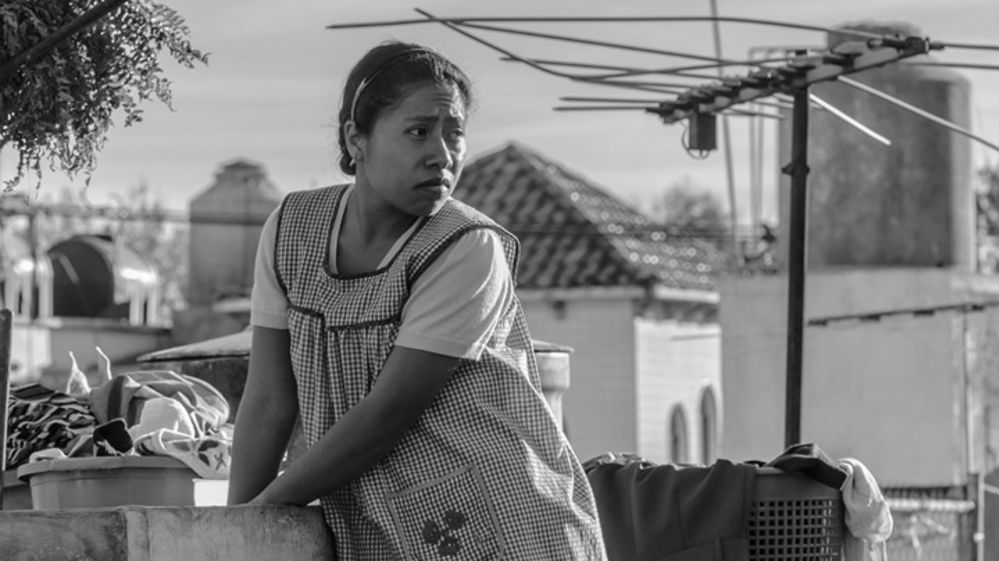Roma is Netflix’s monochrome movie masterpiece, and worth revisiting
Sometimes, you’ve got to mix things up. You wouldn’t spend the rest of your days eating at the same restaurant every week or listening to one track on repeat (unless it’s the TechRadar podcast, then we’d understand), so why settle for uniformity when it comes to filmmaking?
Sure, gun-toting, sky-diving, supervillain-crushing action hero flicks are great, but it’s refreshing to find a movie that challenges everything you thought you enjoyed about cinema. Especially when it's on service you've already got in your home.
Thankfully, Netflix is all for variety, and the world’s most popular streaming platform has invested in storytelling from all walks of life – and all corners of the globe – to offer subscribers an Aladdin's cave of choice. Roma, Alfonso Cuarón’s semi-autobiographical portrayal of a year in the life of a housekeeper in Mexico City, is one of those masterful movies hidden among the blockbusters.
You might remember the buzz around this black-and-white slow burner back at the 2019 Academy Awards. It took home the Oscars for Best Foreign Language Film, Best Cinematography and Best Director, and was lauded as one of those rare pictures that achieves a harmonious marrying of impressive performances, beautiful camerawork and a sense of social importance. It’s easy to roll your eyes at the pomp and circumstance of awards season and the critical jargon bandied around, but Roma really does deserve the praise heaped upon it – and warrants a revisit in 2021.
- Best Netflix movies to watch right now
- Netflix's most popular TV shows and movies are a surprising bunch
- 30 TV series worth binging on Netflix
Roma is a heartfelt, honest, and occasionally distressing experience that merits a big-screen rewatch – the curled-up, night-time laptop routine Netflix is famous for doesn’t entirely do Cuarón’s filmmaking justice. Back in 2019, we wrote an article on why you need to see Roma in a Dolby cinema, and though Covid-19 means there’s no chance of that happening any time soon, the sentiment remains the same.
The story follows Cleo, in a compelling debut performance from Yalitza Aparicio, as she navigates the struggles of her own life as well as those of her employers, a middle-class family enduring the aftermath of a divorce. Cuarón never sensationalizes events, nor does he draw melodrama from dialling in on the individual emotions of his characters. Rather, his cinematography captures the necessary moments of emotion, humor and contextual unrest in equal measure, crafting a fascinating yet convincingly real picture of life in 1980s Mexico.
Roma represents an emotional moment of reflection in the career of a director known for his affinity with science fiction – Cuarón counts Gravity and Children of Men among his credits – and proves a powerful watch for any admirer of cinema for its ability to beautify the seemingly-mundane. It occasionally risks self-indulgence, but Roma is a credit to its creator.

It isn’t a quick watch, nor an easy one, but there are so many parts of Roma to admire on an audiovisual level. This is largely down to the director’s mastery of the camera. Cuarón is famed for his ability to transform the most monotonous of subjects into engaging pieces of filmmaking – remember the creepy playground in Harry Potter and the Prisoner of Azkaban, or the famous 6-minute single take from Children of Men? – and it's a skill no more evident than here.
The opening sequence, for example, sees the camera focus on wet floor tiles which become – by virtue of the lens’ positioning – reflective of the sky above. Birds and planes cross the screen while the camera remains pointed to the floor, and the scene evolves into a dichotomy between the tedium of housework and the hustle of the outside world.
Cuarón likes to use this trick a few times – at least, he likes to linger by the ordinary at every opportunity. For the most part, this achieves the desired effect and undeniably confirms his gift for camerawork. Occasionally, his commitment to dazzling the viewer with technique wears slightly thin, but the personal nature of the project gives Cuarón license to experiment.
Watching Roma is like having a guided tour through an art gallery. Everything you’re looking at is unquestionably beautiful, and though sometimes you wish things would move a little faster, it’s worth taking a moment to step back and appreciate the craft on show.
The monochrome filter helps the movie in two ways. It gives the setting a timeless quality – the story could feasibly take place at any time in the last 50 years – which serves as a mechanism for emphasizing the ubiquitous issues of family turmoil as well as the monotony of domestic duties.
It also underlines the fundamental power of the moving image. 10 minutes in, and the black and white film may as well become glorious technicolor. It’s an evidently-artsy move and won’t appeal to everyone, but it nevertheless differentiates Roma among the wimpish safety of mainstream cinema.
Yalitza Aparicio is fantastic in the lead role – it’s the emotion of her mannerisms and ability to dictate subtle facial changes that establish her as an exciting new talent. So too is Marina de Tavira excellent in her portrayal as the firm-but-fragile Sofía, the mother of four who is unexpectedly thrown into her role as head of the family. It all feels very real, which is, you would think, the point of any film – and it’s the performances that anchor this sense of authenticity.
Ultimately, then, Roma is bold and brilliant, a masterful picture that succeeds almost without a hitch. Watch it for the first time. Watch it again. Then go back to the multiverse madness of Hollywood blockbusters.
- Netflix confirms its shuffle play feature is finally launching this year
from TechRadar - All the latest technology news https://ift.tt/3aafICE
Comments
Post a Comment